The New Design of BUSY Bar
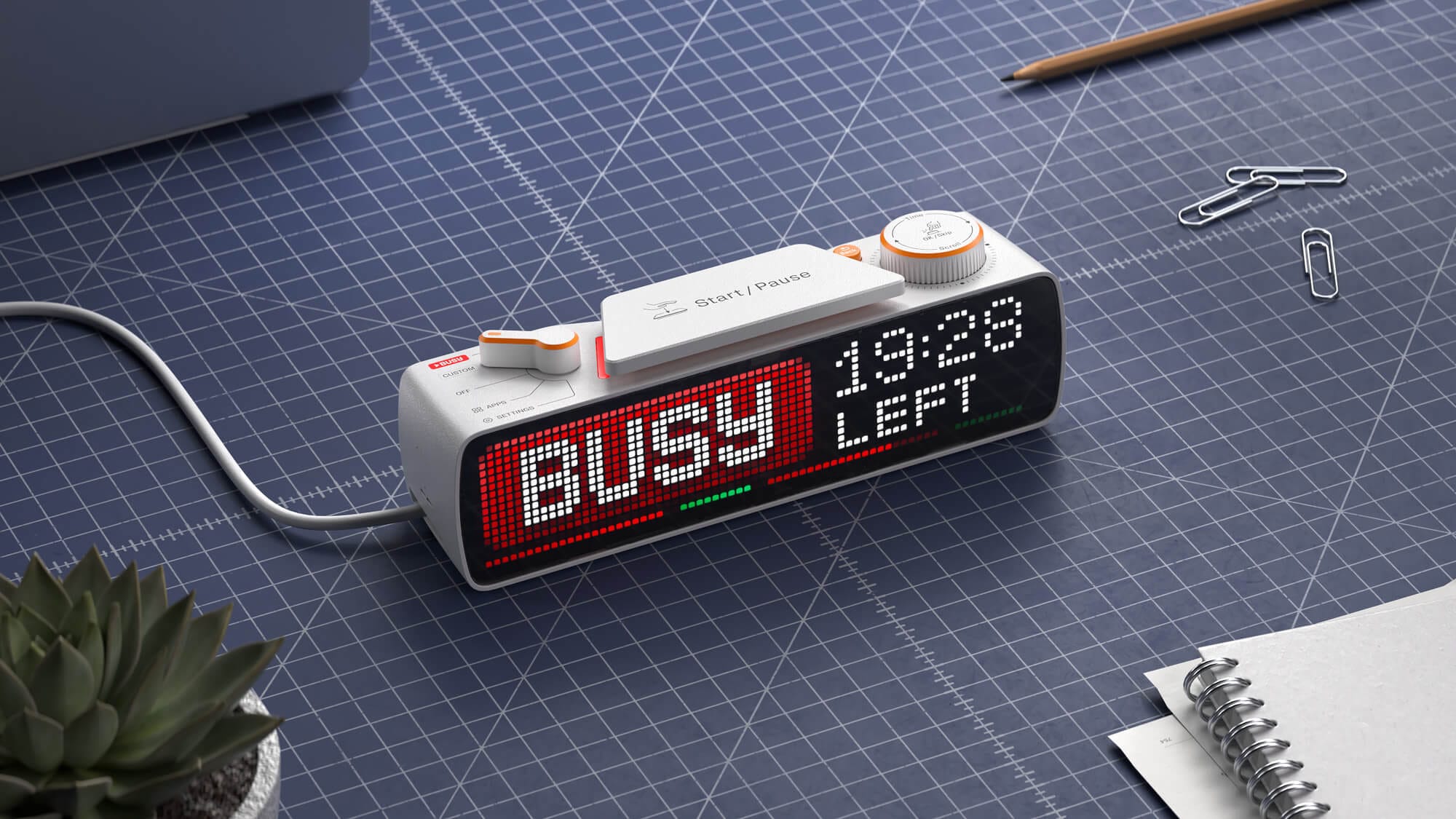
BUSY Bar — a productivity multi-tool and modern Pomodoro timer with distraction-blocking features. The device has received plenty of updates since our last prototype two years ago. Its look and features are being finalized as we manufacture our first test batch — we reveal it all in this update.
Stick around to the end as we show behind-the-scenes details on the manufacturing process and the technologies involved.
Productivity multi-tool
BUSY Bar is our attempt at creating a big “SHUT UP” button. When pressed, it uses physical displays and digital integration to silence the space around you, so you can actually get some work done.
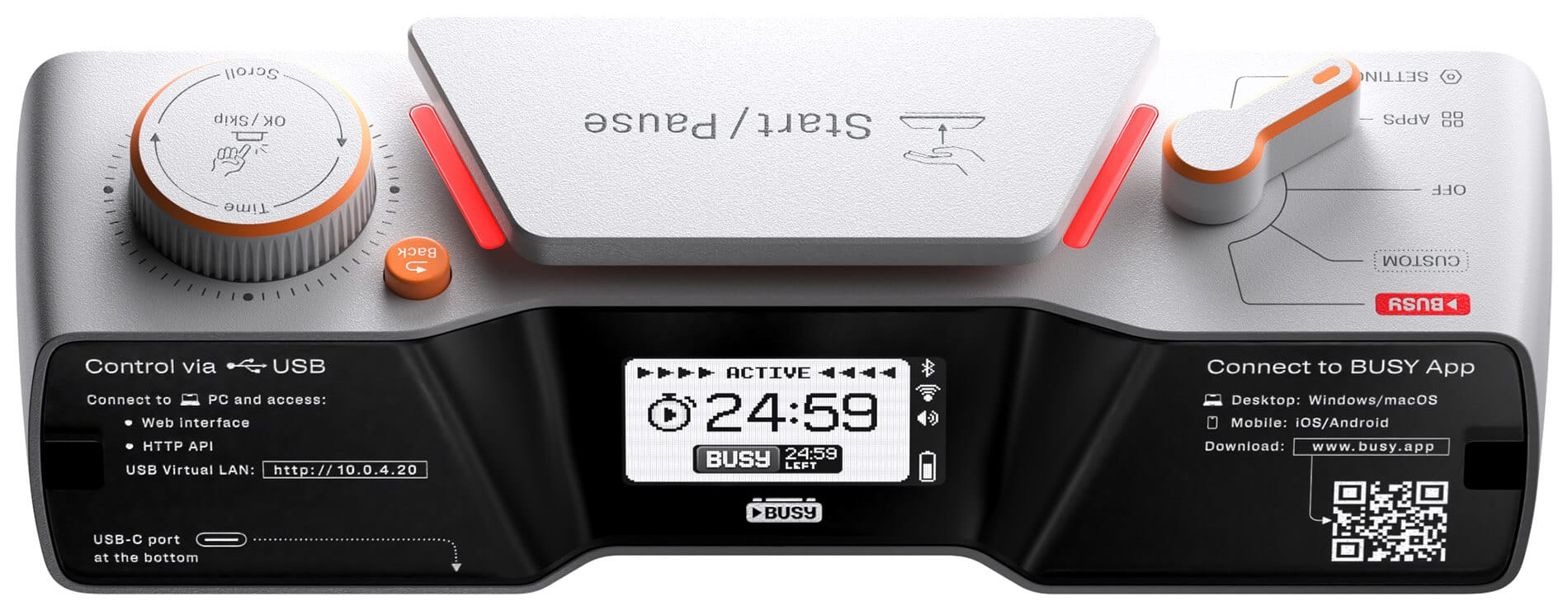
BUSY Bar main features:
- Advanced focus timer — a classic Pomodoro timer, with extras: it takes over your devices, blocks notifications, and doesn’t let you open distracting apps.
- Custom status — a visual message to let others know you’re busy, plus an optional timer showing when you’ll be free again.
- Open API & smart home integration — developers can integrate the device into their systems using the open HTTP API.
- Apps — basic apps like clock, weather, and social media follower count are included. We’ll also provide a Software Development Kit (SDK) so developers can create awesome apps of their own.
Mechanical controls
The main problem with all the similar products we found is that they’re incredibly hard to use. We’ve tried every LED sign on the market, and they’re all terrible — you have to remember what each button does, how long to hold it, and how to switch to the mode you need. That’s why we opted for mechanical controls that are easy to use and impossible to forget.
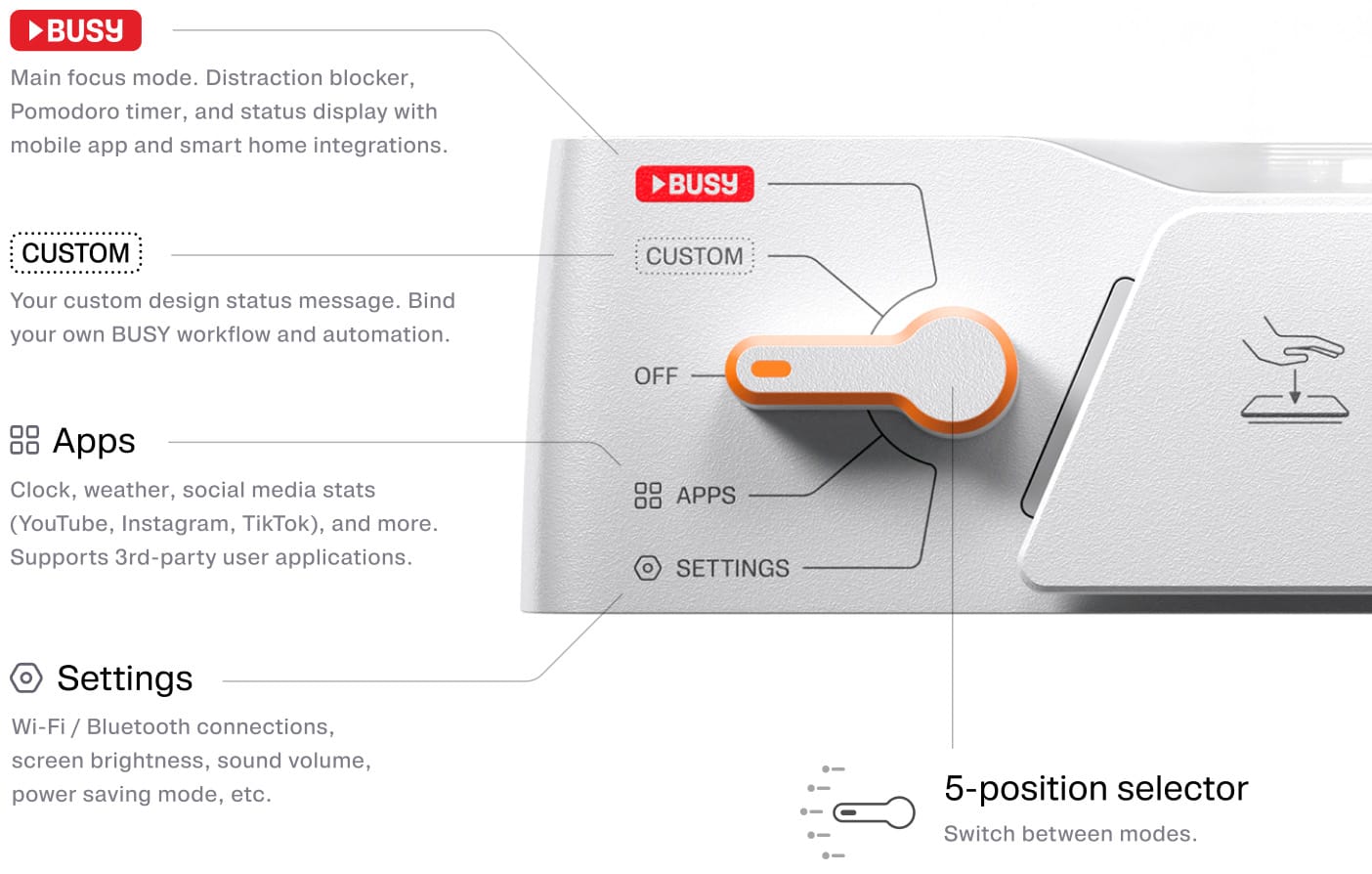
- 5-position mode selector — switches operating modes. The main idea is that you can have several preset scenarios and flip between them in a split second, without diving into menus or suffering through setup.
- BUSY and CUSTOM modes — do the same thing as each other, but with different profiles for different work scenarios. It could display a custom “ON AIR” status and trigger a smart home scene — like all the smart lights in your house turning red while you’re recording.
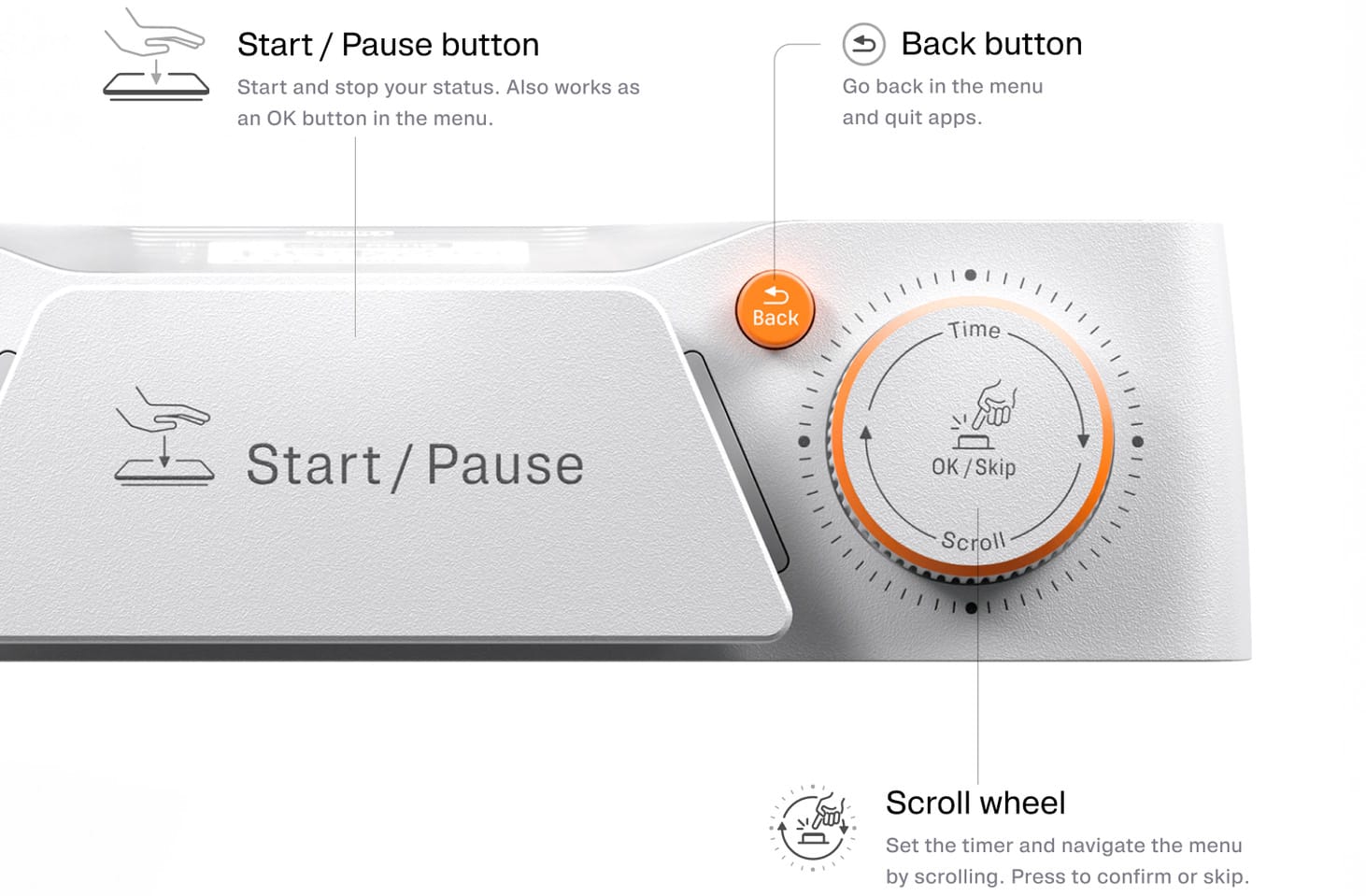
- Start/Pause button — a giant start button inspired by chess clocks. You can hit it without looking and instantly launch the BUSY mode. Because once you’re in hyper-focus, the last thing you want is to waste time with your phone.
- Scroll wheel — lets you quickly set a custom timer with a scroll and press. It’s also used for navigating through menus.
- Back button — takes you one step back and cancels the active status.
[Video] You can control BUSY Bar using only its large mechanical knobs, switches, and buttons
We wanted it to be possible to control the BUSY Bar entirely physically. Our mechanical engineers have made sure that every button, switch, and knob is satisfying and tactile to use. The distinct feelings and shapes mean you can use BUSY Bar without even looking at it.
Modern Pomodoro timer
The Pomodoro Technique was designed to enhance productivity and focus by dividing your time into 25 minutes of work, followed by 5 minutes of rest. You alternate back and forth until you finish what you’re working on.
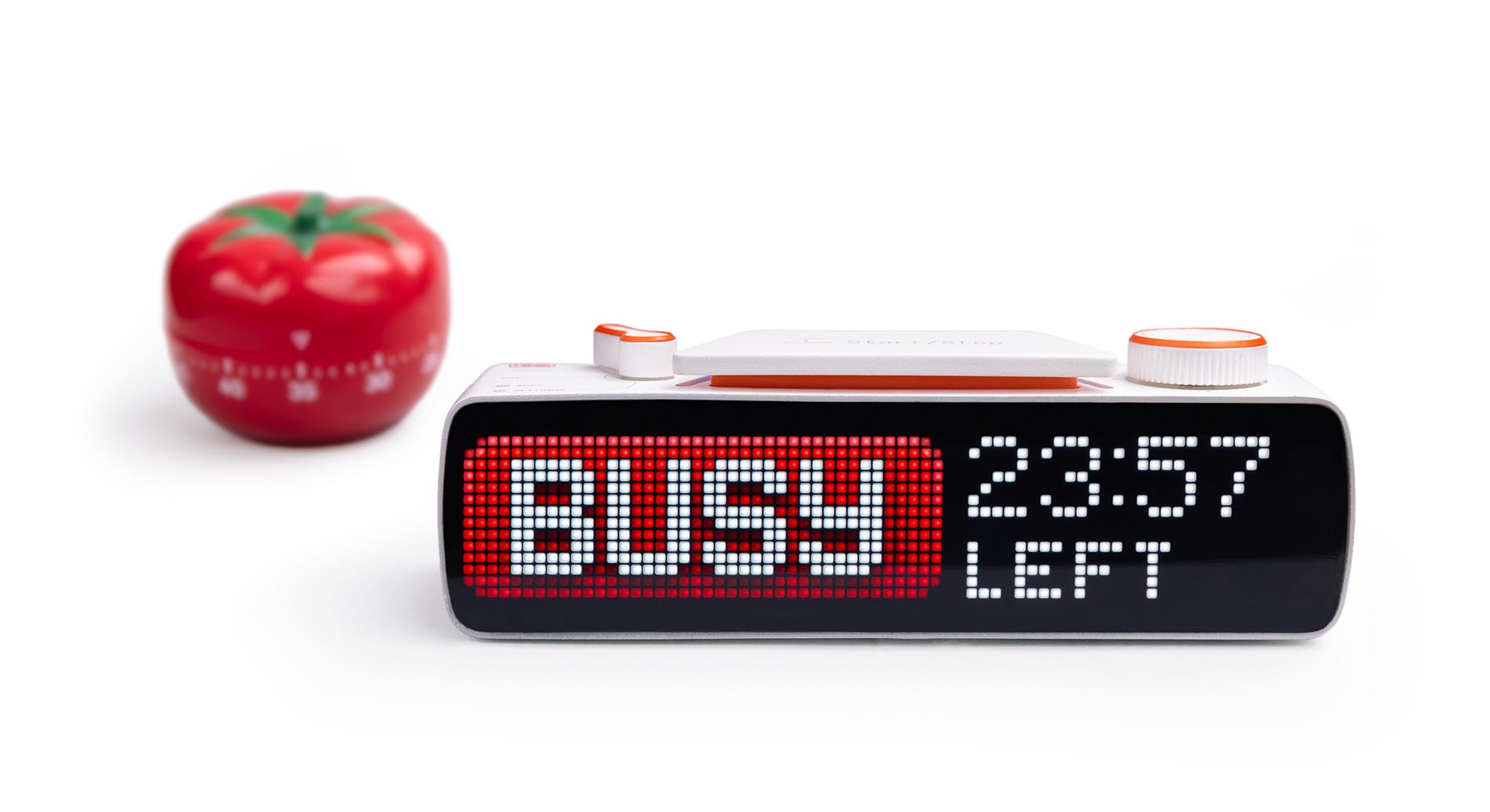
We love Pomodoro — it’s used by a ton of us in the office. But a classic Pomodoro timer is outdated and inflexible. What if you want to work for longer than it allows? How do you let your colleagues know that you’re not to be disturbed? What if you need to pause for a bathroom break?
We reimagined the classic Pomodoro timer for modern hybrid working. The large main display lets your colleagues and family know how long till you’re free to chat, while the small monochrome rear display shows the same to you. Or, you can point the main screen at yourself as a clear reminder.
[Video] BUSY Bar can help you with the Pomodoro Technique — an interval timer that splits your time into 25 minutes of work and 5 minutes of rest
Notification blocker
We’re constantly distracted by smartphone notifications, and manually activating and deactivating Do Not Disturb mode is difficult and annoying.
When synced with BUSY App on your smartphone, BUSY Bar can automatically block distractions for you. While in focus mode, all you’ll see is your countdown timer: your notifications will be waiting for you once it’s over. It also blocks apps completely, so you can’t open them until you’re finished.
[Video] Notification blocking is handled automatically by BUSY Bar and the companion app
BUSY Bar can block notifications from all your devices at once: phone, watch, and computer. All you need to do is connect them to your BUSY App account.
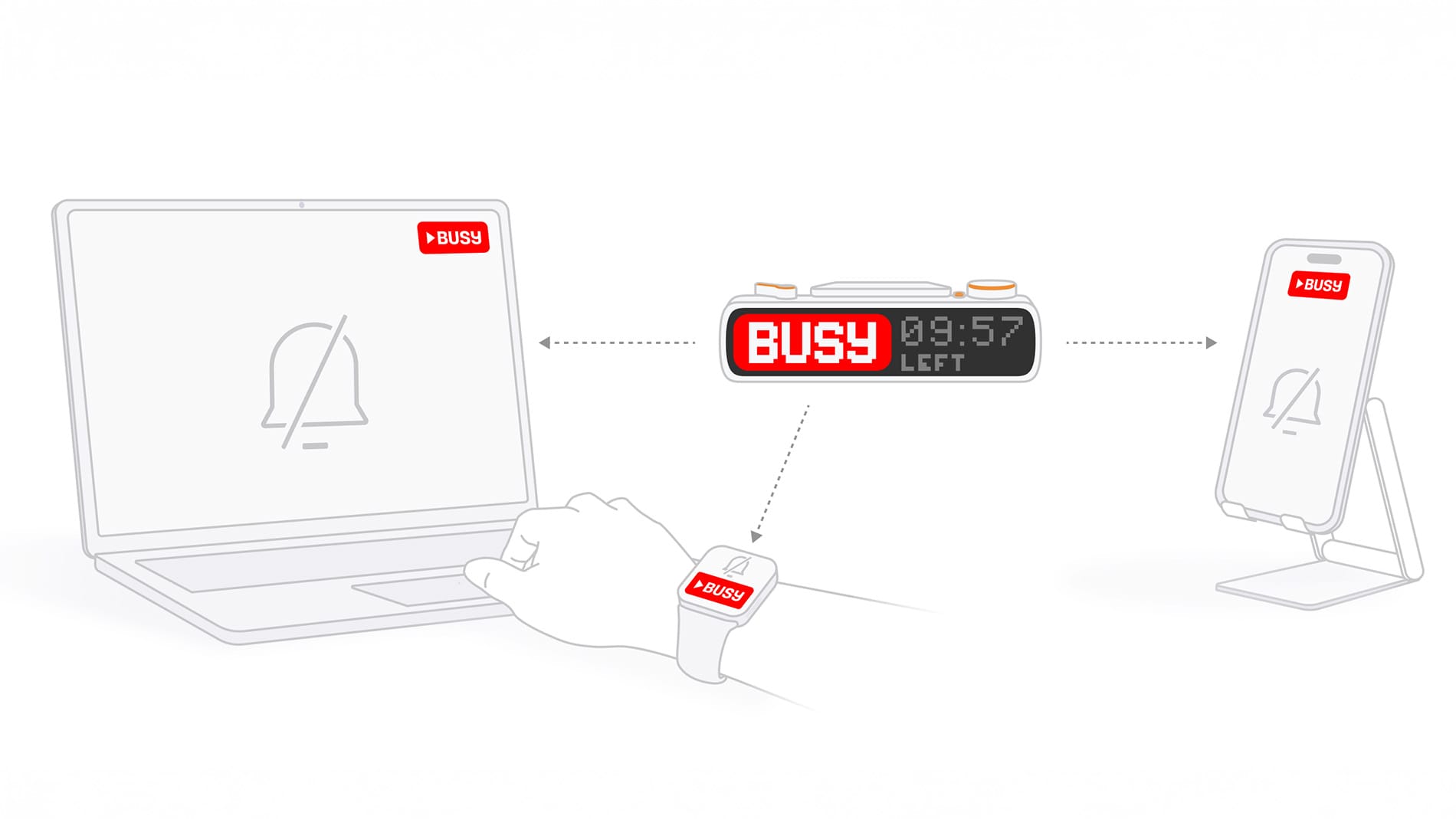
You can design your own custom BUSY workflow that changes the environment to be more focused. For example, if you're working with sound recording, making a podcast, unwanted noise from your devices is a problem. By hitting one button you can silence all notifications instantly.
[Video] BUSY Bar can activate your own custom workflow scenarios
Automatic ON CALL status
Sometimes you’re sitting silently on a call and people around you keep trying to start a conversation, so you have to gesture to them, “I’m on a call, dammit! Can’t talk now.” The BUSY Bar can automatically show when you’re on a call, so coworkers won’t distract you.
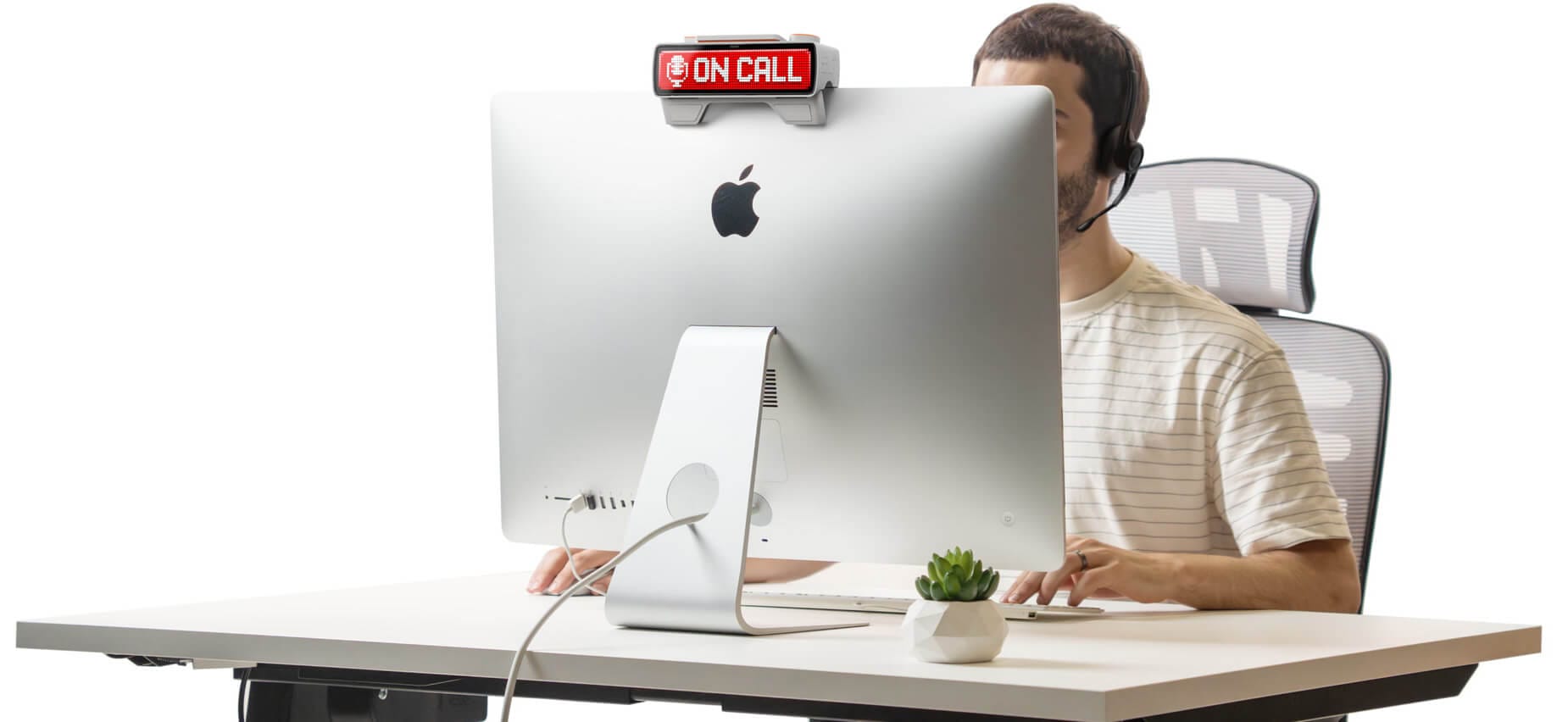
When you work from home, you want to make sure your family doesn’t bother you while you’re on a call. You have to warn them: “I’ll be busy for an hour, don’t come in, don’t bother me.” Now you can simply hang the BUSY Bar on your door and activate it over Wi-Fi through the app on your phone or desktop.
Activates when you’re on call
BUSY App for macOS and Windows 11 can monitor when the system microphone is in use and automatically activate ON CALL status on BUSY Bar. Any program that uses the microphone on your computer will trigger the status — it doesn’t matter what program it is: Zoom, Slack, Google Meet, Discord — anything you like. It works with all of them automatically, with no need for individual setup.
[Video] BUSY App monitors microphone usage and can automatically activate custom statuses on the BUSY Bar remotely over Wi-Fi
For example, when a specific window is in focus, like Photoshop or Word, BUSY Bar could light up with a “DO NOT DISTURB” sign or any custom status you like.
Smart home integration & SDK
We added smart home integration to BUSY Bar so you can use it in home automation scenarios. When you’re busy, your music automatically stops or starts, the lights shift into focus mode, the front door locks, and more — creating a space optimized for productivity.
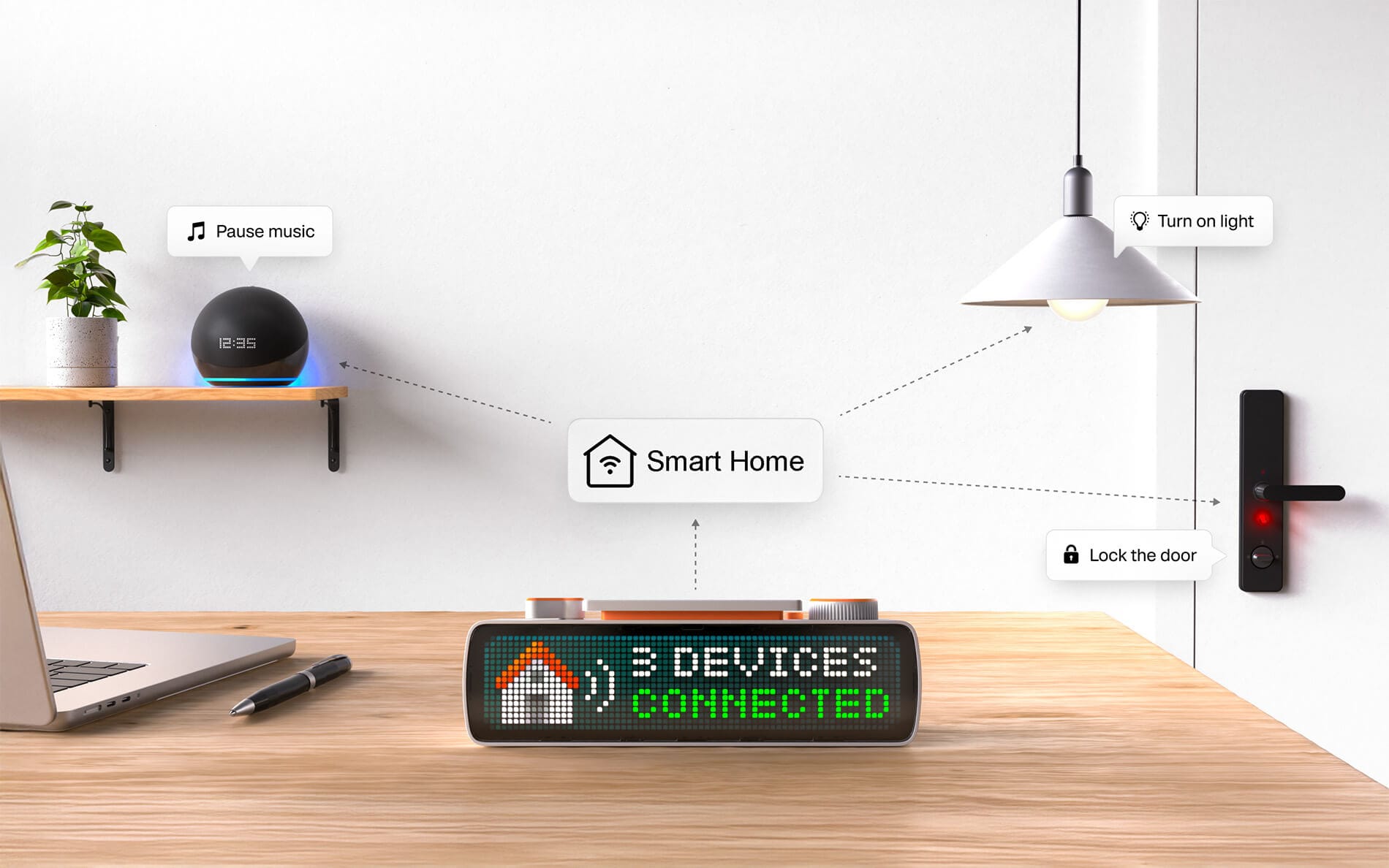
There are several ways you can connect BUSY Bar to your smart home:
- Matter protocol — for smart home hub brands, like Apple and Google.
- Home Assistant — for flexible integration with your local smart home.
- Open HTTP API — for creating your own integrations.
Matter protocol
We’ve officially joined the Connectivity Standards Alliance to bring Matter support to BUSY Bar. Matter is a next-generation smart home protocol developed by industry leaders like Apple, Google, Amazon, and others. It aims to ensure seamless compatibility between smart home devices, regardless of brand.
You can connect BUSY Bar to any smart home hub with Matter — no additional plugins or complex setup required. Simply scan the QR code displayed on the BUSY Bar screen to connect it to your Wi-Fi network and smart home ecosystem. Matter operates over LAN, so automations are fast and independent of internet connectivity.
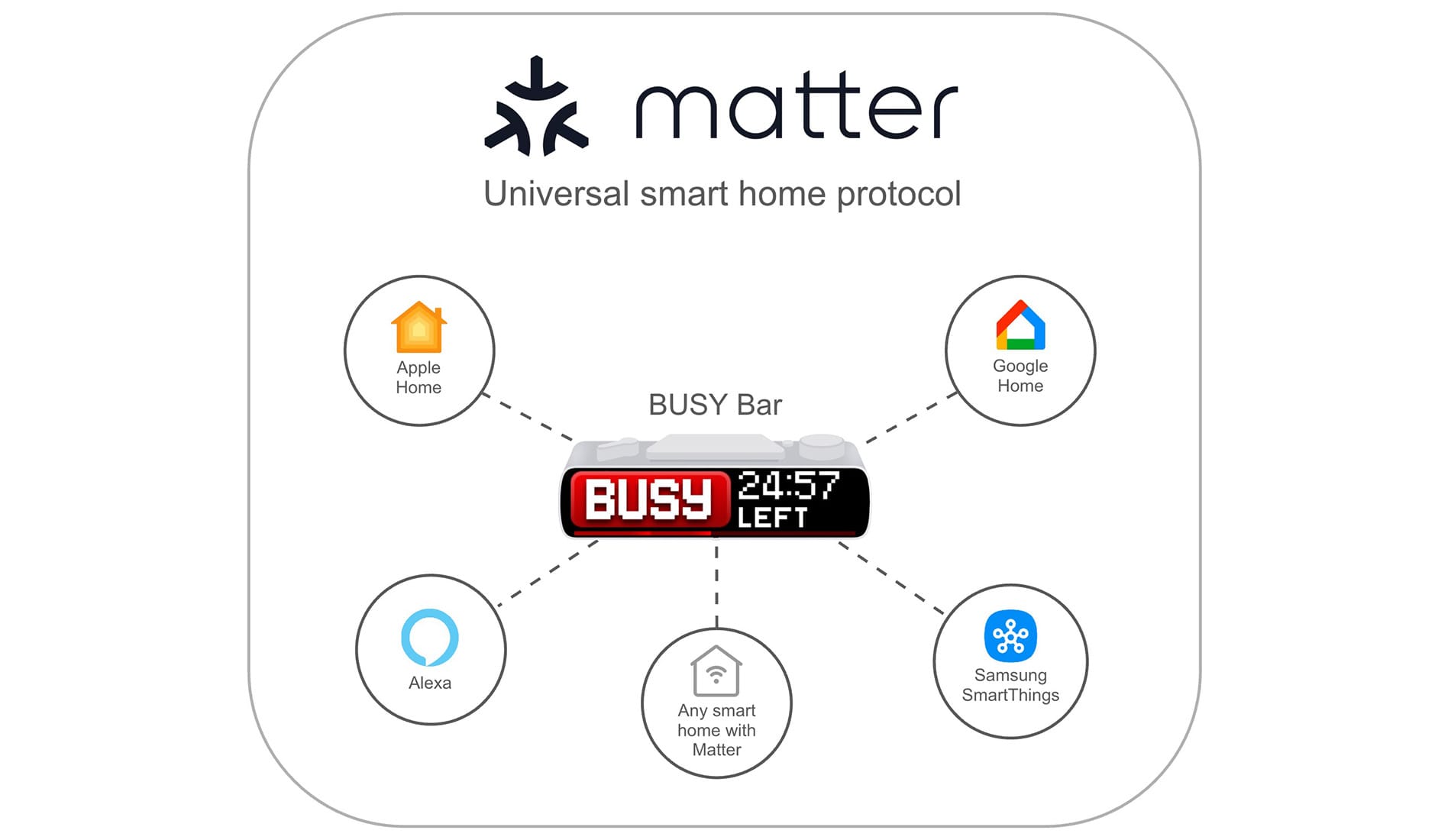
Home Assistant integration
We also plan to add native Home Assistant integration for BUSY Bar. Home Assistant is a popular open-source smart home system that supports a countless number of smart devices from multiple brands.
With this integration, you can display custom animations, play custom sounds, and have your BUSY Bar react to other devices in your Home Assistant system. This grants a greater level of flexibility than integration via Matter.
Open HTTP API
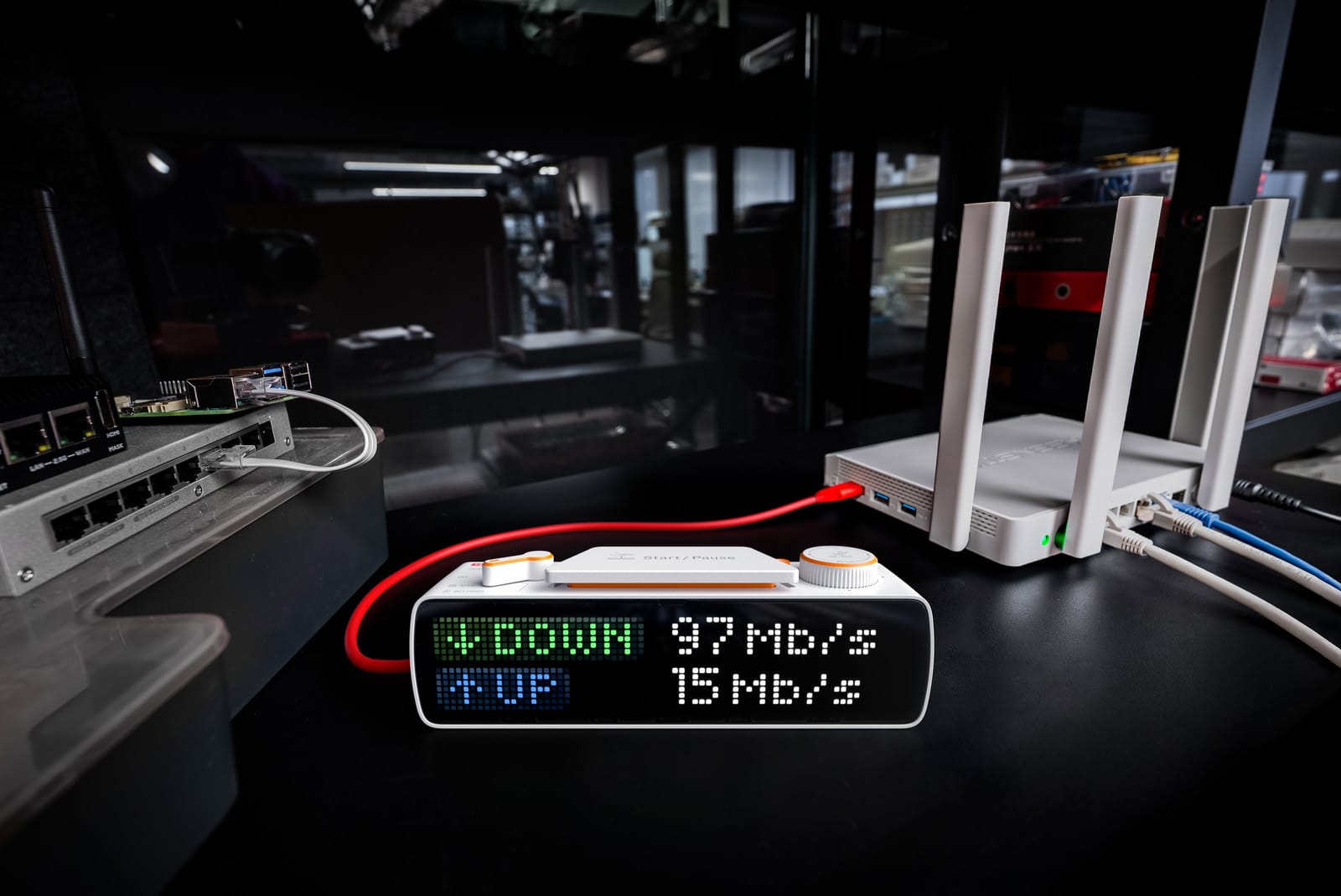
With our HTTP API, you can create your own integrations. This flexible set of interfaces allows you to interact with the BUSY Bar via LAN, USB, or the cloud.
We also provide libraries that implement our Open HTTP API, making it easy to integrate BUSY Bar into your JavaScript, Go, or Python apps.
Multiple network connectivity
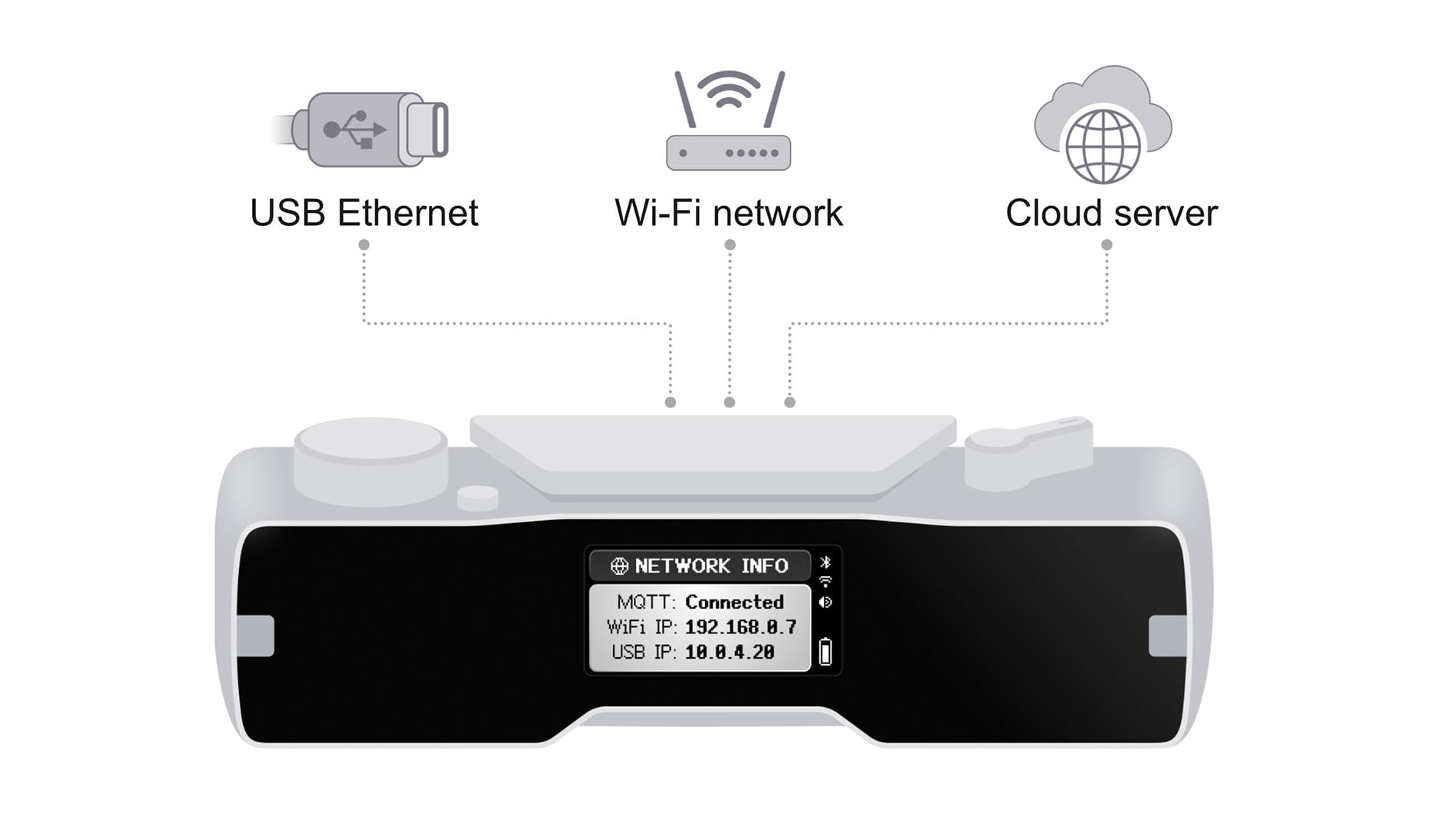
You can connect to BUSY Bar in the following ways:
- USB Ethernet — when BUSY Bar is connected via USB, it acts as a virtual network adapter, creating a local network with your PC. This virtual LAN gives access to the web interface and the Open HTTP API.
- Wi-Fi network — connect BUSY Bar to your home or office Wi-Fi network to access its web interface and interact with it via our Open HTTP API. The device can also be integrated into your smart home locally via Wi-Fi.
- Cloud server — add your device to your BUSY App account and it automatically connects to our cloud. This enables remote control from anywhere with our Open HTTP API. You can use your own server by connecting BUSY Bar to it via MQTT protocol — no vendor lock-in.
SDK for app development
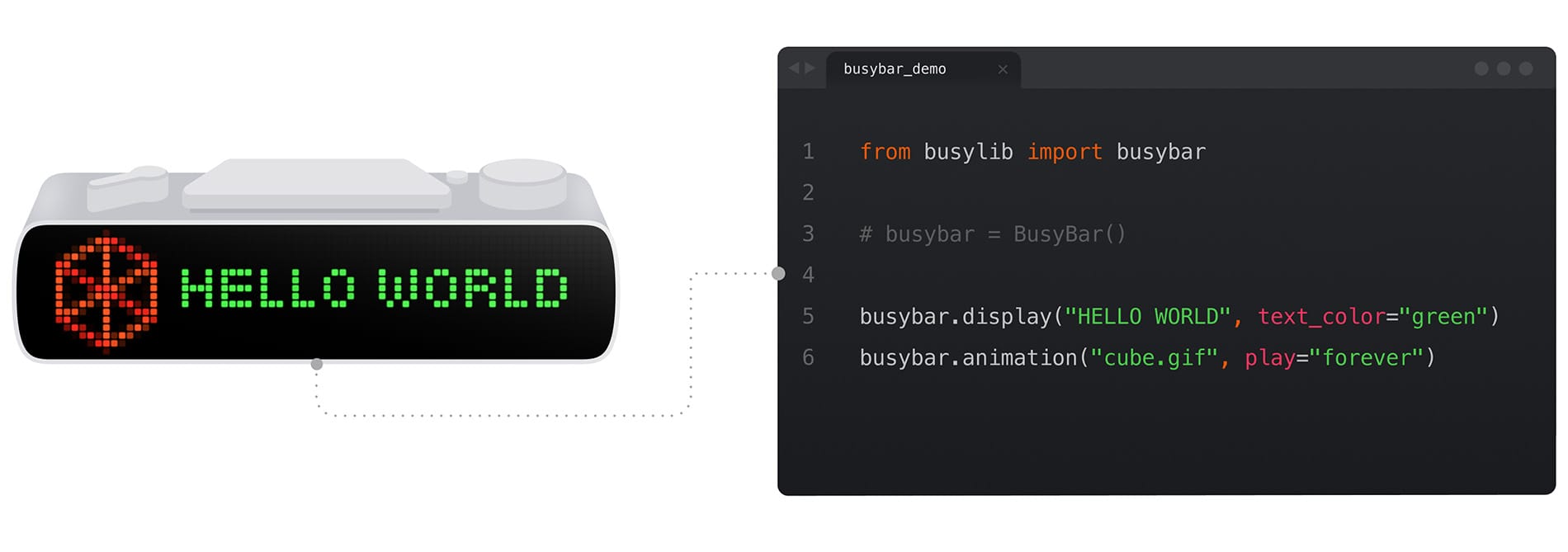
We’re currently working on an SDK and libraries that will allow developers to create custom apps that run directly on BUSY Bar. The SDK is still in development, and we’ll be sharing more details soon.
Tech specs
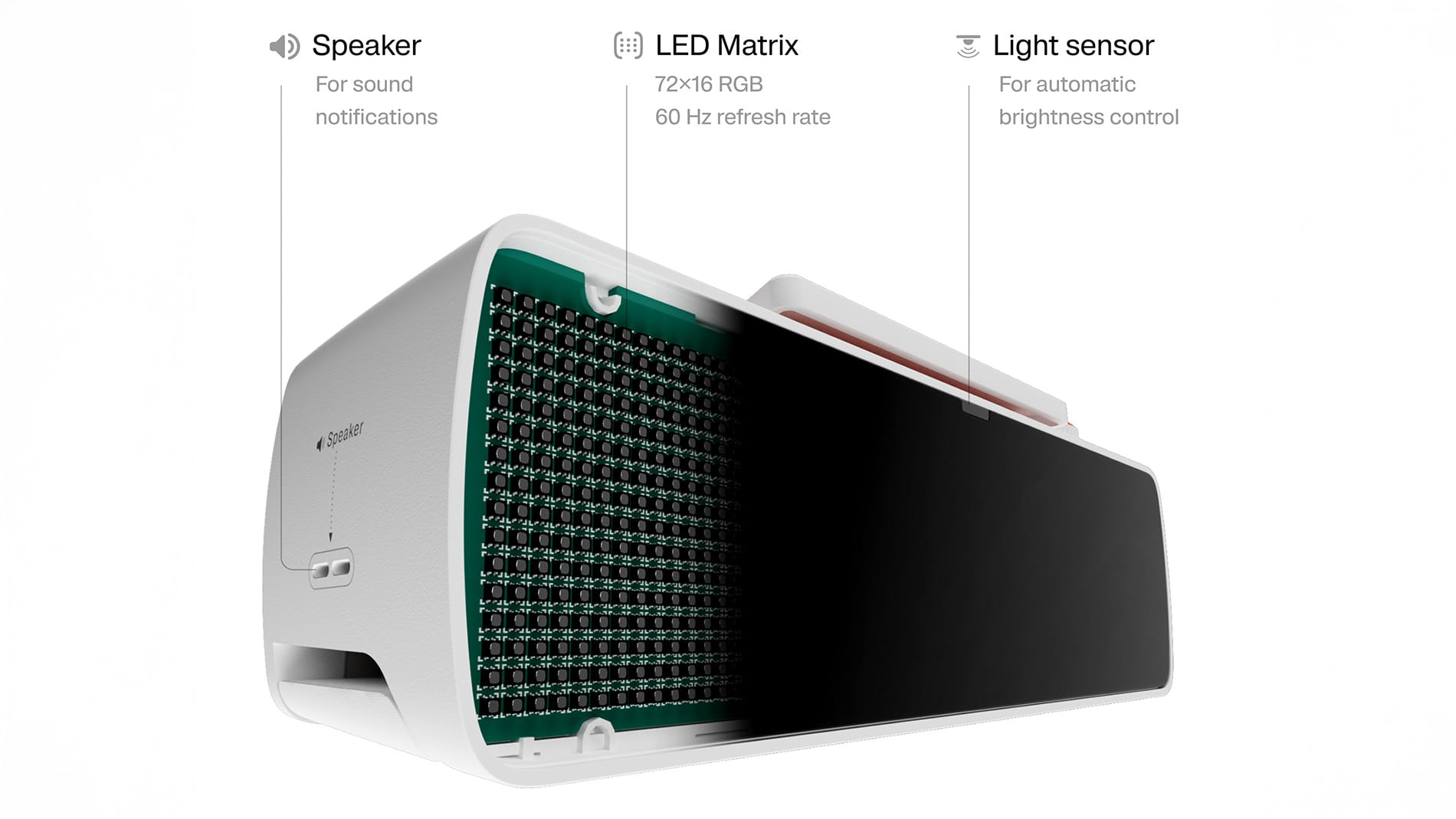
- Main display — a full-color LED matrix with a 72×16-pixel resolution,
2.2 mm pixel pitch, and a dynamically adjustable refresh rate up to a smooth 60 Hz. - Light sensor — for adaptive brightness, ensuring both displays are bright enough to stay visible in daylight, but comfortably dim in the dark.
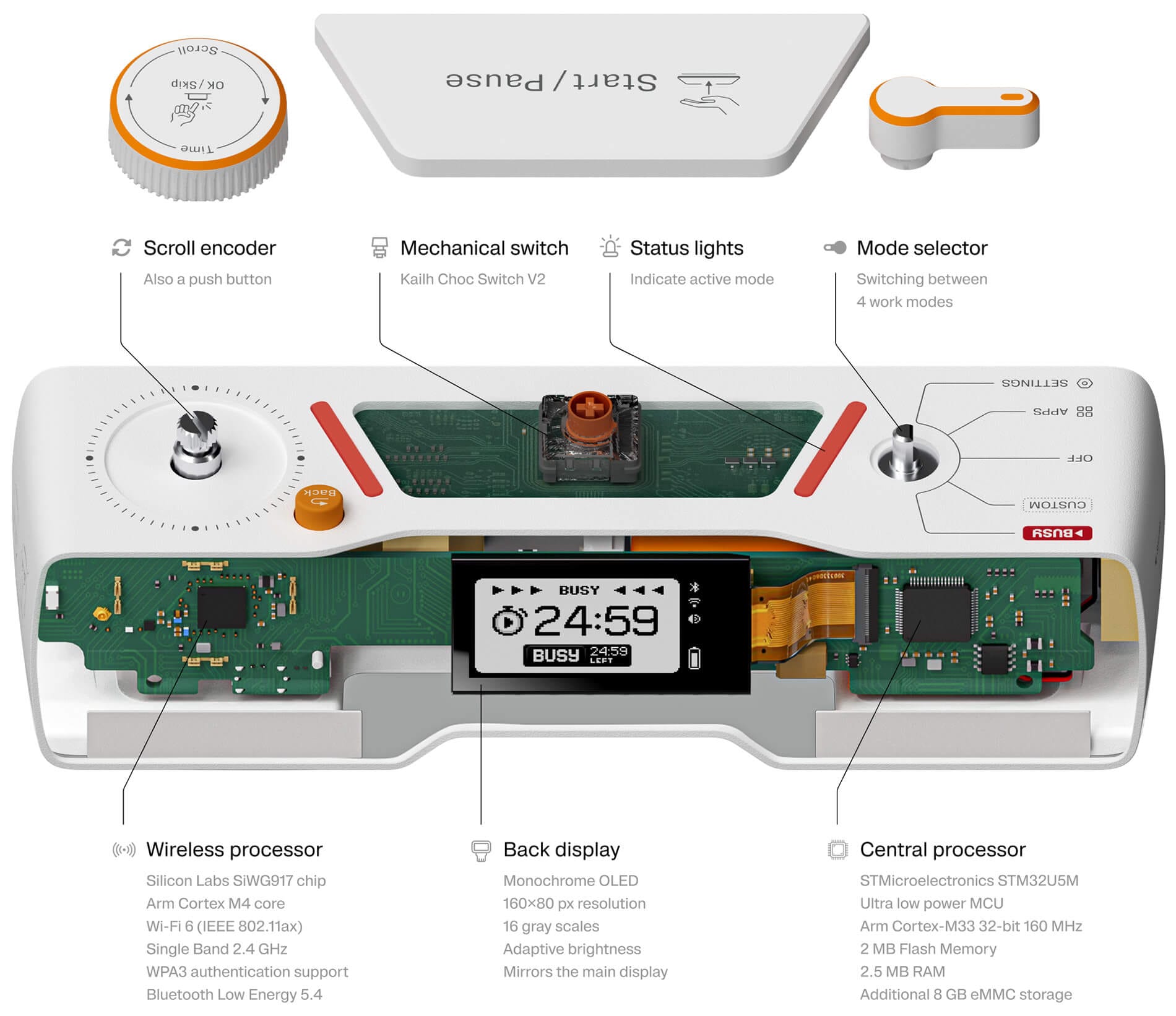
- Back OLED display — a 1.5-inch display with a resolution of 160×80 pixels and support for 16 levels of grayscale. Like the main display, its brightness adjusts automatically based on ambient lighting.
- 2× microcontrollers — The main MCU (STM32U5M) controls the entire device and runs apps. The wireless MCU (Silicon Labs SiWG917) handles all wireless communication (Wi-Fi 6, Bluetooth 5.4).
- 8 GB eMMC storage — for storing the BUSY Bar interface’s highly dynamic assets, for a smooth layered UI and 2D effects.
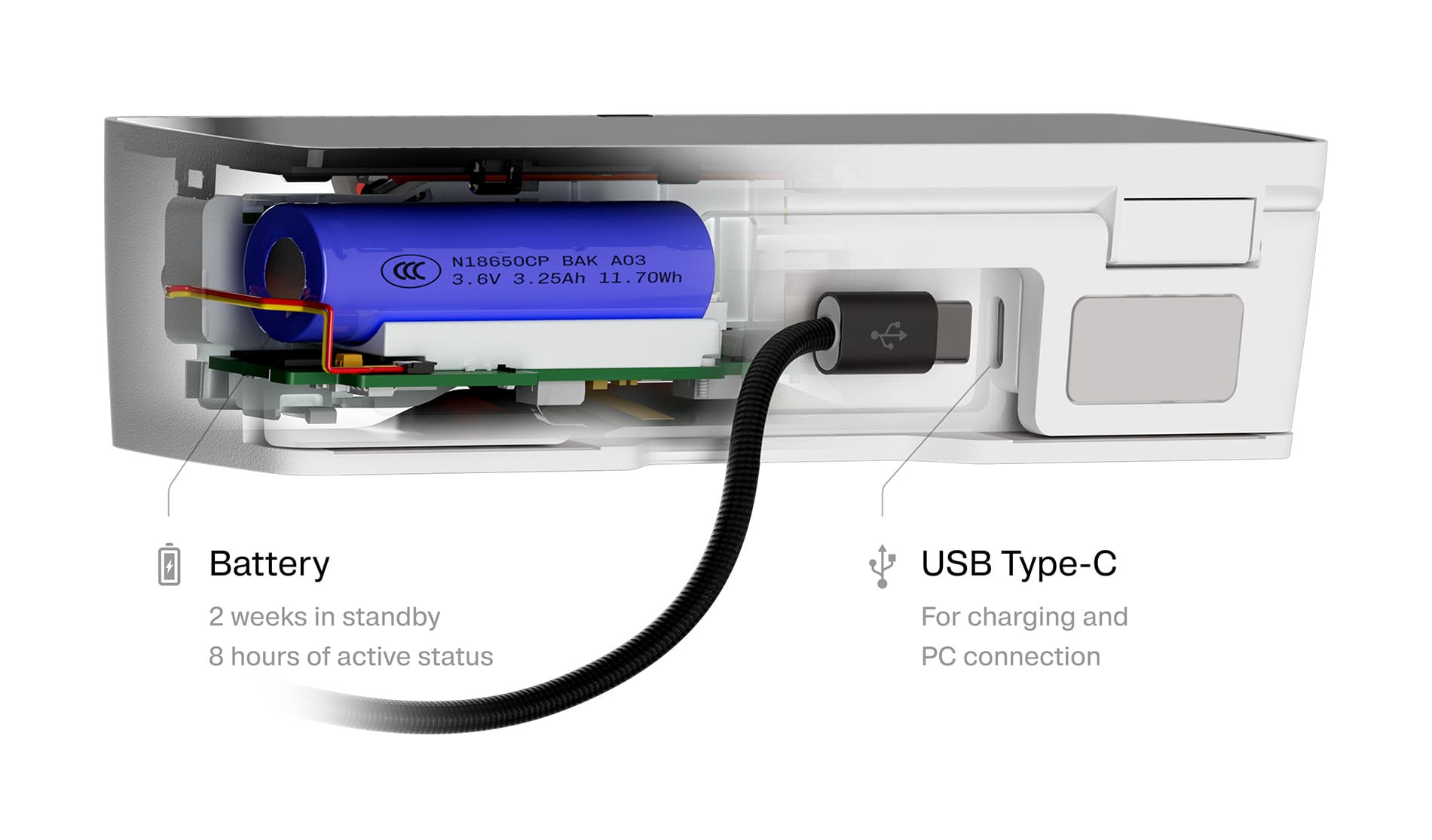
- Built-in 18650 battery — a 3,250 mAh battery is enough to power the device autonomously for an entire workday on a single charge.
- USB Type-C port — for use with your PC as a virtual LAN adapter. When connected to a charger with Power Delivery (PD), BUSY Bar charges at up to 15 W, achieving full charge in under an hour.
Development insight
BUSY Bar hardware development is almost finished, and we are currently focused on the firmware and getting ready for full-scale production. Additionally, we’re developing BUSY App, along with web services and smart home integration. Now, let’s take a look at BUSY Bar Development Kit and how we produced the test batch of devices in the factory.
Development Kit
Our embedded developers and electronics engineers require full access to electronic components, including all three printed circuit boards (PCBs):
- Control board houses all physical controls and status LEDs.
- Main board contains both MCUs, storage, audio chain, and charger.
- Display board houses RGB LEDs, LED drivers, and a light sensor.
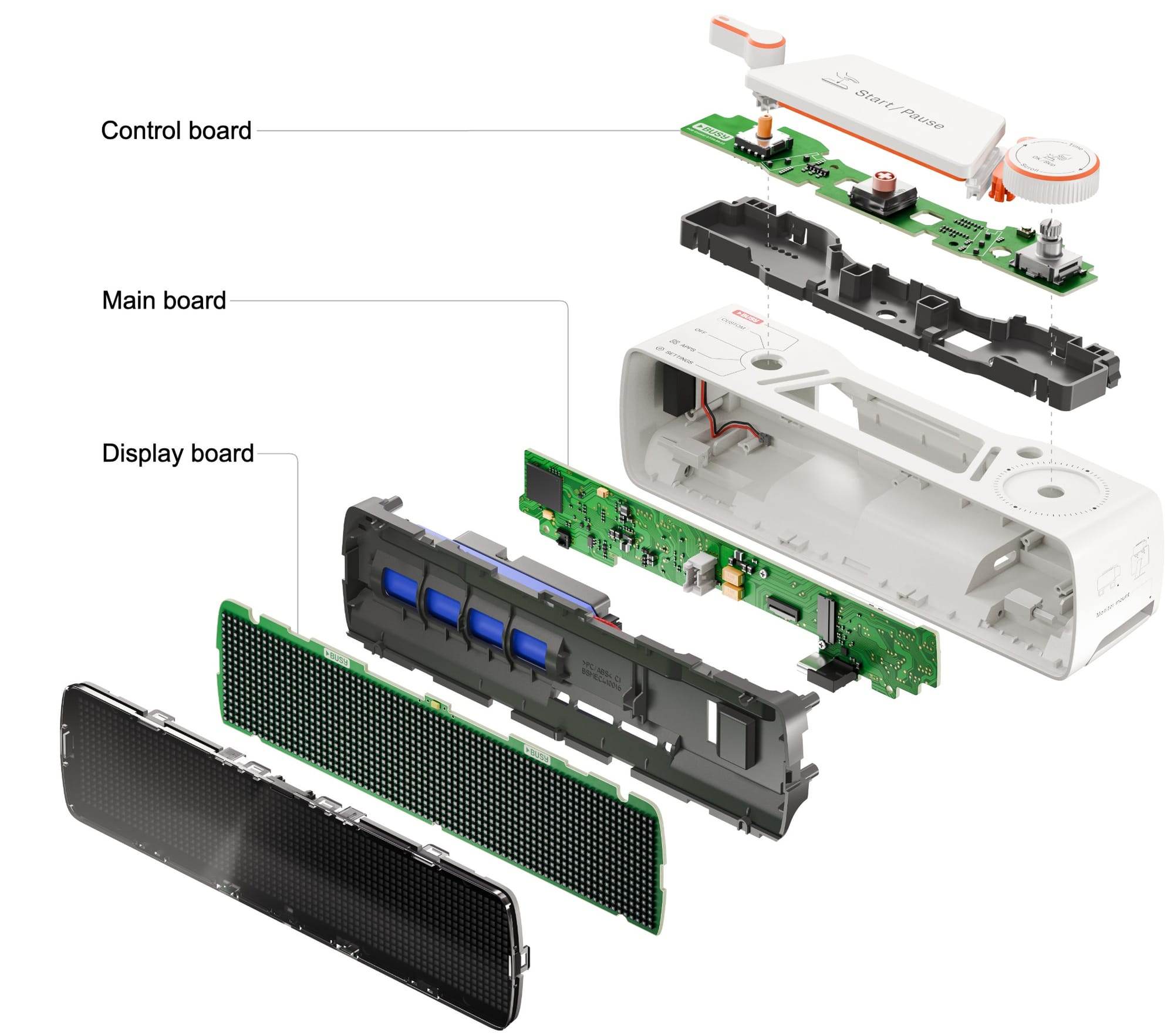
To make debugging more convenient, we 3D-printed a custom flat mounting base that holds all three PCBs together connected with flat flexible cables (FFCs). This setup provides easy access to both sides of each PCB, making testing and troubleshooting significantly more efficient.
[Video] The Development Kit also allows to view both displays at the same time
Developer Board
Our UI designers and firmware testers flash firmware to BUSY Bar via USB, while embedded developers require access to the SWD interfaces and UARTs of both MCUs. To make embedded development easier, we created a Developer Board that connects to the Control PCB. It exposes 2.54 mm headers for debug probes, and includes buttons for resetting MCUs and switching them to BOOT mode.
We designed the Developer Board so that it can be connected to an assembled BUSY Bar — simply remove the Start/Pause button knob and screw the board onto the device. The electrical connection between the debug board and the Control PCB is made via pogo pins.
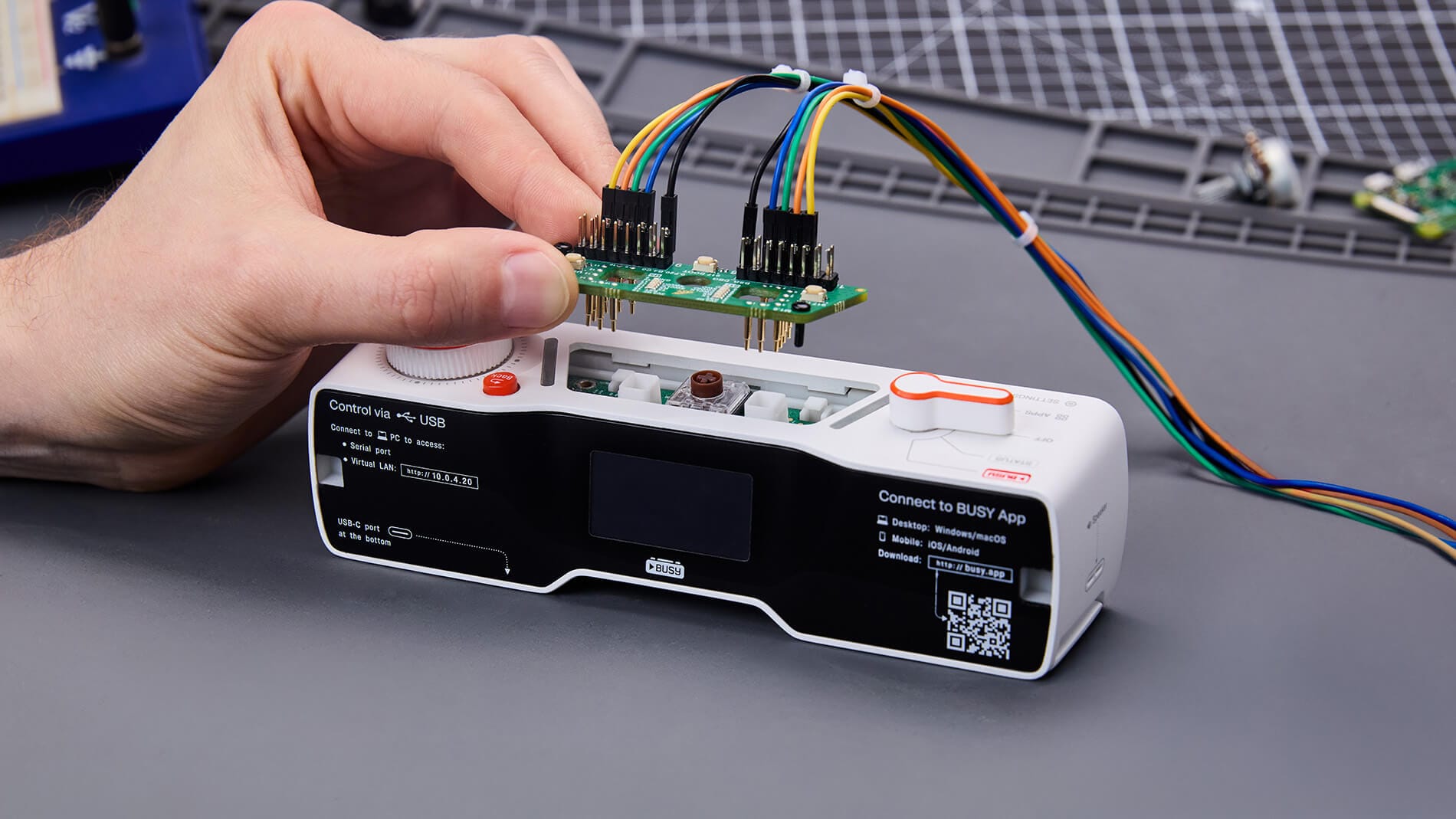
Preparing for manufacturing
We’re currently in the Engineering Validation Testing (EVT) stage. This means only a small test batch of devices has been produced in the factory, and we’re now focused on validating and refining them.
The devices from the test batch have a slightly different color and are without a textured finish — the final product will be similar to what you see in the illustrations and videos.
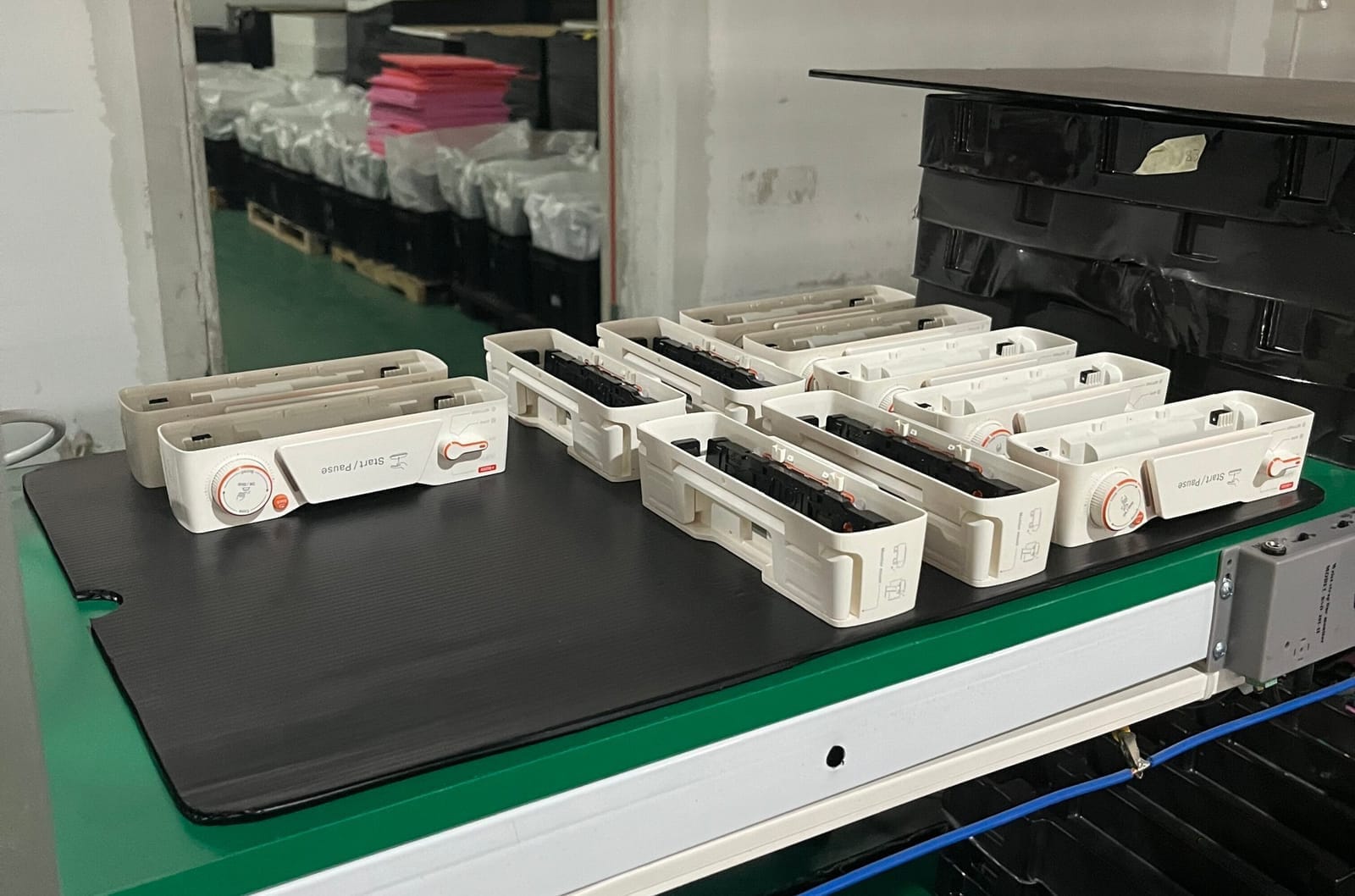
A very important aspect of preparing for full-scale production is ensuring that the external surfaces of plastic parts produced by injection molding meet the required quality standards. Parting lines — where the mold parts meet — should be as invisible as possible.
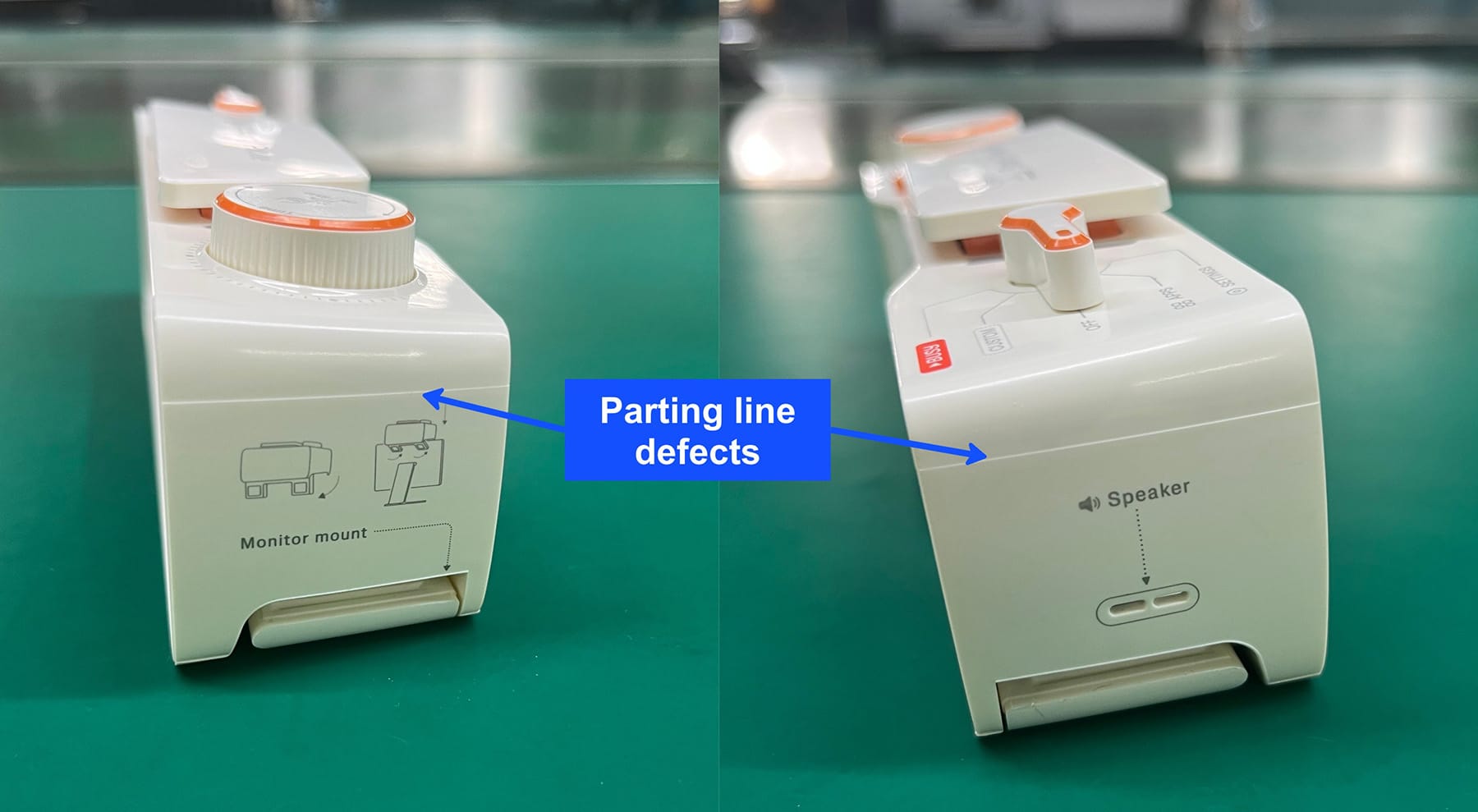
We are trying to minimize parting lines as much as possible through precisely-controlled molding parameters, including injection pressure and temperature. For example, the mold for a single BUSY Bar plastic body consists of six parts that must be perfectly aligned, with plastic injected under optimized conditions to achieve a clean, seamless look for the final product.
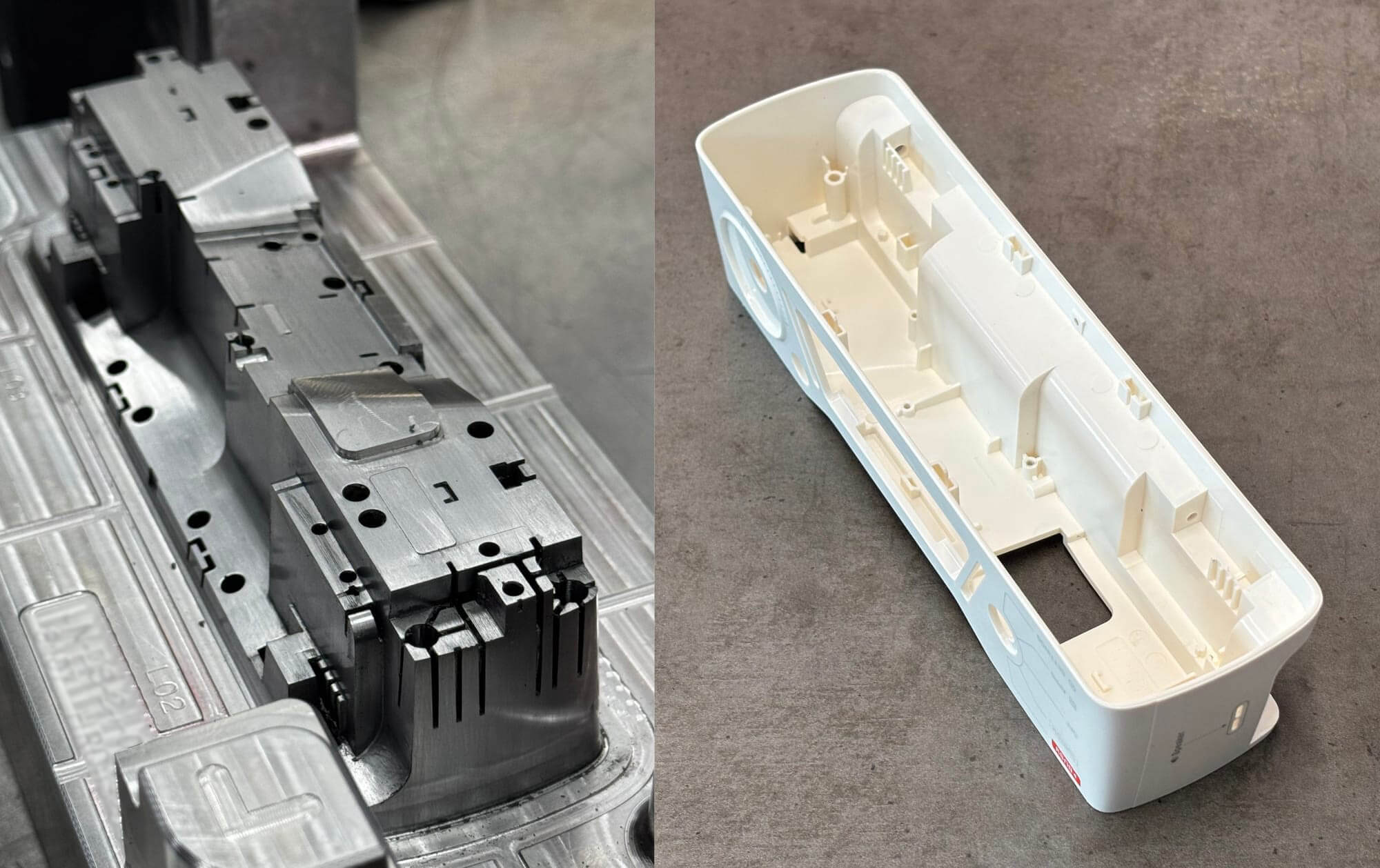
For colorful plastic parts we’re using two-shot injection molding. It involves injecting two different plastics in two stages, in the same mold. It’s a more durable solution for creating bicolor plastic parts compared to painting.
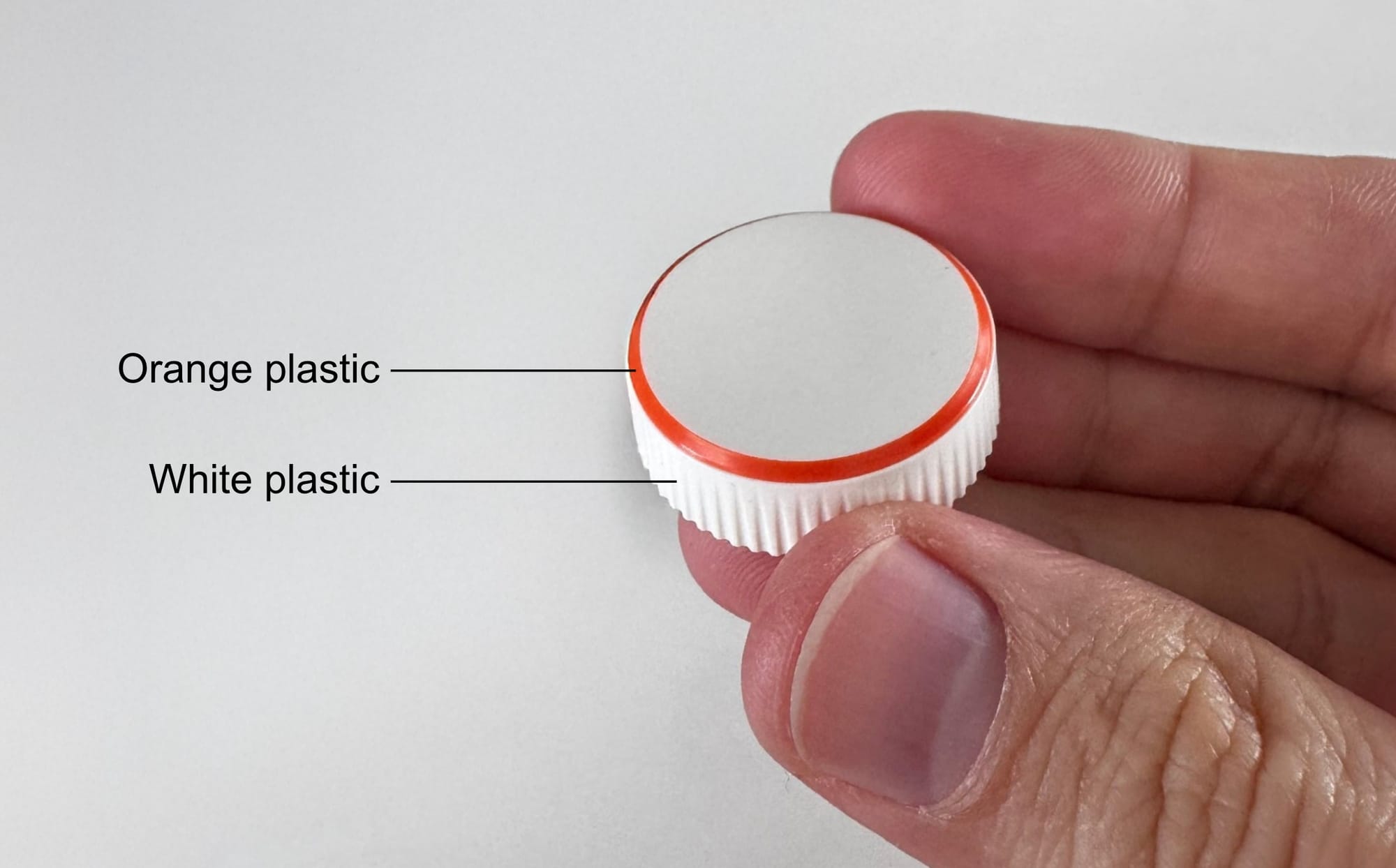
We use in-mold labeling for the back cover and its text instructions. A pre-printed black label is placed into the mold, and injected molten transparent plastic covers the label and bonds them together. This creates a permanent and premium finish, and prevents text from wearing off.
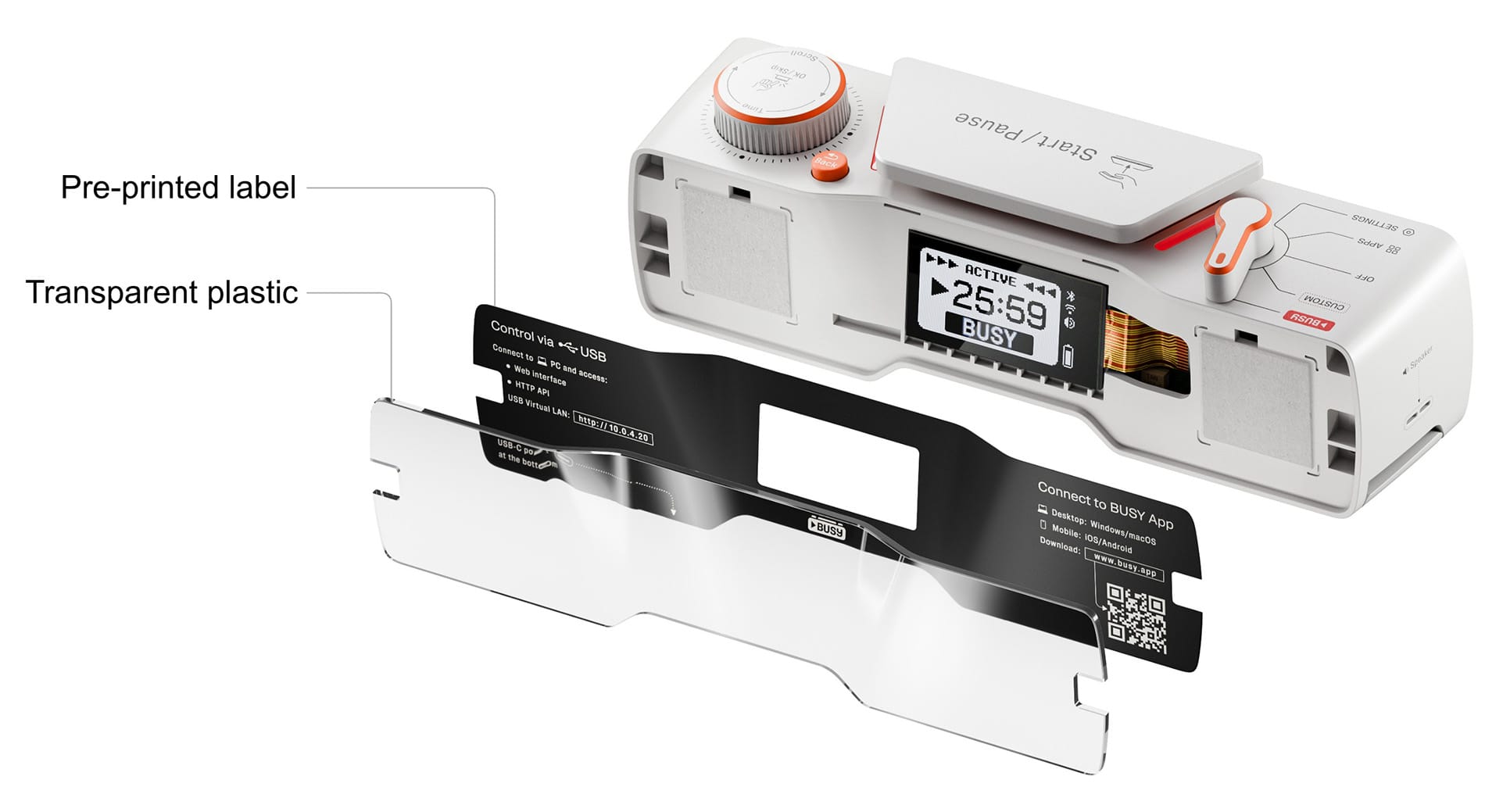
Factory hardware testing
During the EVT stage, we’re also fine-tuning our test jigs — custom testing fixtures designed to quickly and reliably verify hardware components during production. The testing jig rotates the encoder, tests the buttons, flips the mode switch, and activates the LEDs to automatically check that they’re working. This quick test is done for every production unit on the manufacturing line.
[Video] The testing jig runs quick tests of the encoder, buttons, switches, and LEDs for every production unit
To be sure that the components we choose are durable and can survive active usage, we test every mechanical part ourselves. We need to check that they match the promises of their manufacturer. To do this, we built our own reliability test bench for mechanical testing — it spends days running thousands of clicks and rotations to find breaking point.
[Video] The reliability test bench spends days running stress tests for mechanical components
Pre-order now
We’re preparing for production and undertaking thorough testing ahead of BUSY Bar’s full launch. We’re also getting ready to launch our crowdfunding campaign later this year.
In the meantime, you can be the first to know when BUSY Bar is officially available to purchase by subscribing to updates in our shop:

Don’t forget to visit the project website at busy.bar and try out BUSY App — available now!


